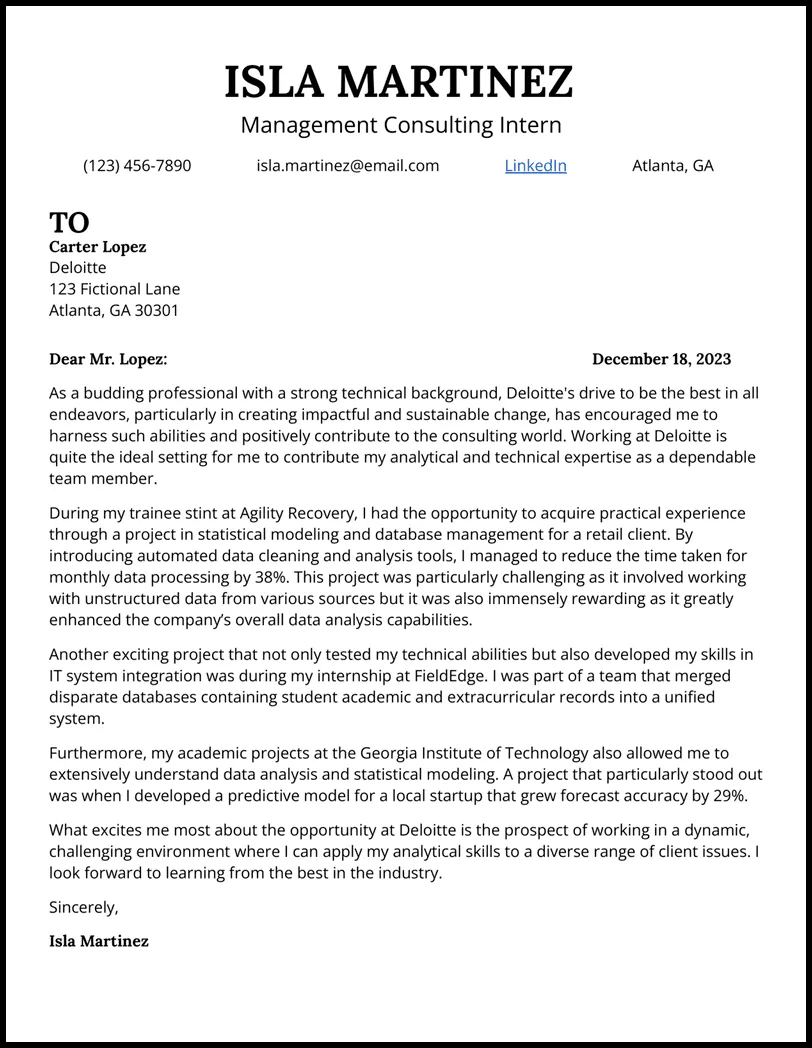Crafting a Winning Consulting Cover Letter
A consulting cover letter is your first introduction to a potential employer and a crucial component of your application package. It’s not just a formality; it’s an opportunity to make a strong first impression and distinguish yourself from other candidates. This guide will walk you through the essential steps of crafting a compelling cover letter that highlights your experience, skills, and achievements, increasing your chances of landing your dream consulting job. A well-written cover letter can be the key to unlocking the door to your next career opportunity. Whether you’re a seasoned professional or just starting your consulting journey, mastering the art of the cover letter is paramount for success. It is important to remember that the cover letter is not just a summary of your resume. It is a chance to tell a story, explain your passion for consulting, and showcase why you are the best fit for the role.
Understanding the Importance of a Consulting Cover Letter
In the competitive field of consulting, a cover letter serves as a personalized introduction that goes beyond your resume. It allows you to articulate your unique value proposition and demonstrate your understanding of the consulting firm and the specific role. It’s a chance to explain why you are passionate about the job and what contributions you can make. Recruiters and hiring managers often read cover letters before diving into resumes, using them to quickly assess a candidate’s suitability and interest. A well-crafted cover letter can capture their attention, showcasing your personality and enthusiasm. Therefore, a strong cover letter provides an opportunity to address any gaps in your resume, explain career transitions, and provide context for your achievements. It is important to illustrate your understanding of the company’s culture and values and how your skills align. Failing to provide a well-written cover letter could mean that your resume is not even considered.
Highlighting Your Relevant Experience
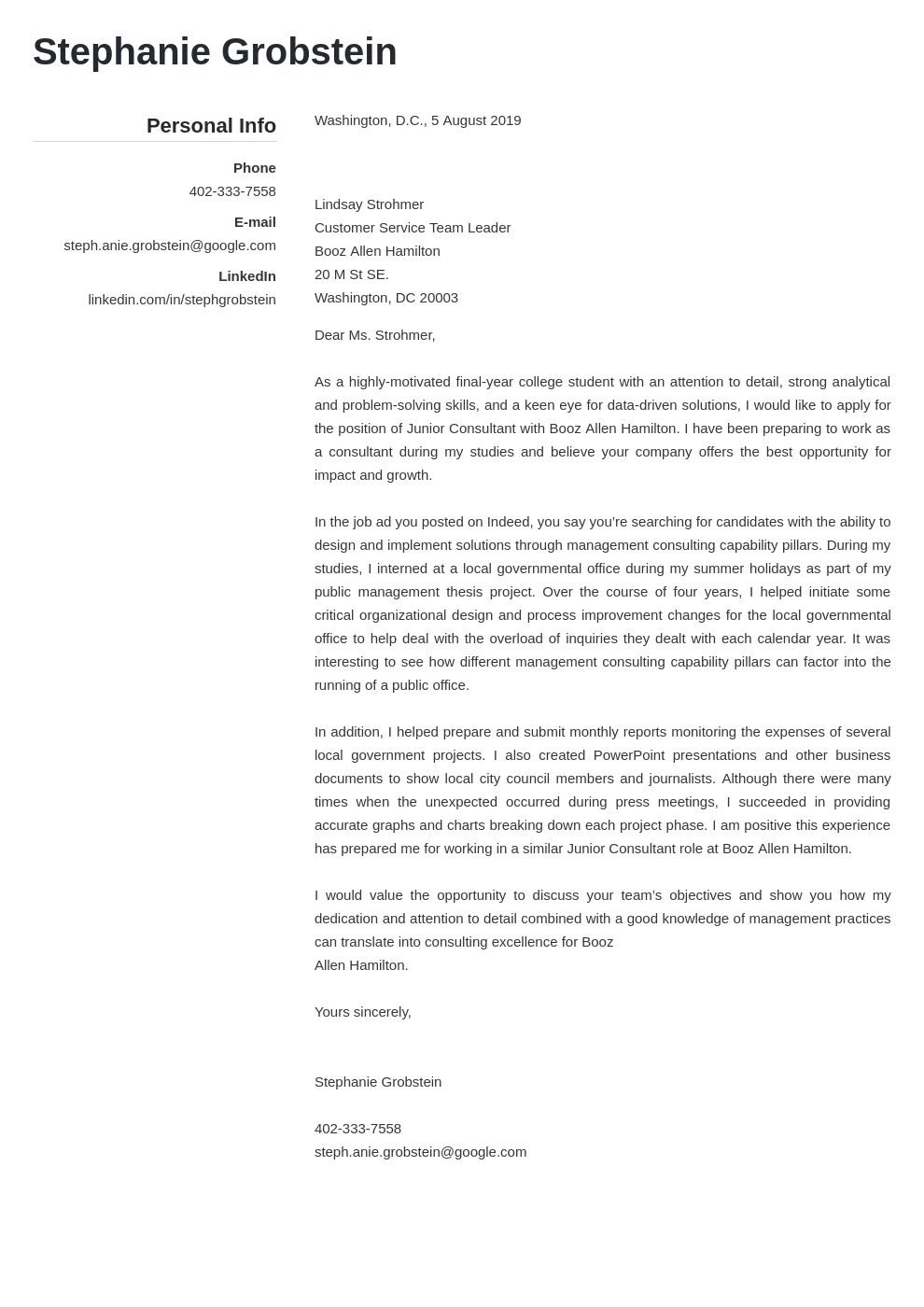
When highlighting your relevant experience, focus on the projects, roles, and responsibilities that align with the requirements of the consulting position. Use specific examples to illustrate your abilities and demonstrate how you have successfully tackled challenges in the past. For example, instead of saying “Managed projects,” provide details like “Managed a team of 10 consultants to deliver a complex supply chain optimization project for a Fortune 500 company, resulting in a 15% reduction in operational costs.” Quantify your accomplishments whenever possible, showcasing the impact of your work and providing tangible evidence of your success. Tailor your examples to match the consulting firm’s industry focus or the specific needs of the role. This targeted approach demonstrates your understanding of the firm’s business and your ability to add value. The more relevant your experience is, the higher your chance of securing an interview. Remember to provide context, explaining the project’s objectives, your role, and the outcomes achieved.
Showcasing Your Skills and Achievements
Consulting firms seek candidates with a diverse set of skills, including problem-solving, communication, leadership, and analytical abilities. Showcase your skills by providing concrete examples of how you have used them to achieve results. When highlighting achievements, focus on quantifiable results and metrics that demonstrate your impact. For example, if you improved efficiency, specify the percentage increase or the amount of time saved. If you led a successful project, mention the outcomes. Use action verbs to describe your accomplishments. For example, instead of “Assisted with marketing campaigns,” write “Led a marketing campaign that increased lead generation by 20%.” Use the STAR method (Situation, Task, Action, Result) to structure your examples, providing context, describing your actions, and highlighting the results. Make sure your skills and achievements align with the requirements listed in the job description. By highlighting these skills, you show the hiring manager that you are a good fit and can deliver results.
Tailoring Your Cover Letter for Each Role
One of the most common mistakes job seekers make is sending a generic cover letter to every company. The best way to stand out is to tailor your cover letter for each specific role and firm. Research the company and the specific requirements of the job, and then adjust your letter accordingly. Address the hiring manager by name whenever possible, and personalize the content to show that you understand the company’s mission, values, and current projects. Review the job description carefully, and highlight the skills and experiences that align with the requirements. Use keywords from the job description throughout your cover letter to demonstrate your understanding and fit. Explain why you are specifically interested in this role at this company. What aspects of the job appeal to you? What do you hope to accomplish? Make sure your letter feels personal and authentic. This approach demonstrates your genuine interest and attention to detail, which is a valuable asset in the consulting world.
Researching the Consulting Firm
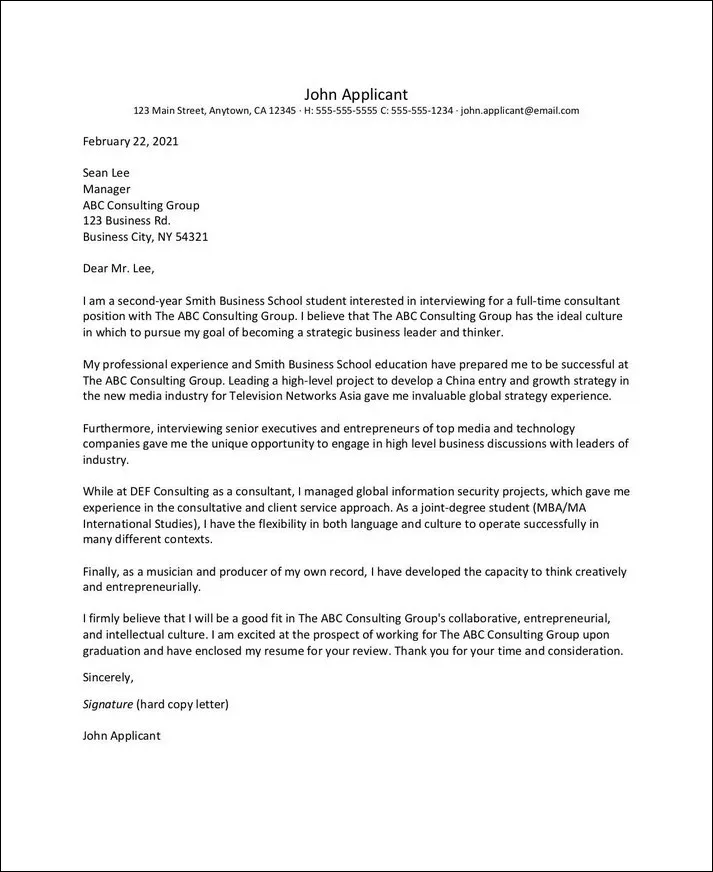
Before writing your cover letter, thoroughly research the consulting firm. Understand their values, services, and target clients. Visit their website, read their publications, and review their social media profiles to learn about their recent projects and achievements. This research will not only help you tailor your cover letter, but it will also provide talking points for the interview. Understand the firm’s culture, mission, and recent news. Identify any recent projects the firm has undertaken and the outcomes achieved. If possible, research the specific team or department you are applying to and tailor your letter accordingly. Showing that you understand the firm’s business and the specific role demonstrates your commitment and attention to detail. Addressing these aspects in your cover letter will impress the hiring manager. By referencing specific aspects of the firm, you show that you’re genuinely interested and not just sending out a mass application.
Formatting Your Consulting Cover Letter
The format of your consulting cover letter is as important as its content. A clean, well-formatted letter is easy to read and creates a positive impression. Use a professional font like Arial, Calibri, or Times New Roman, with a font size between 10 and 12 points. Use clear headings and bullet points to break up large blocks of text and make the information easy to digest. Ensure your cover letter is well-structured and easy to follow. Include your contact information at the top, followed by the date, the hiring manager’s name (if known), and the company’s address. Keep the letter concise, ideally one page, and avoid any unnecessary information. Use appropriate spacing and margins, making sure there is adequate white space to avoid a cluttered look. Proofread your cover letter meticulously to catch any typos or grammatical errors. A well-formatted cover letter shows that you pay attention to detail and are committed to presenting yourself professionally. Ensure that your formatting is consistent throughout the document and use a consistent style for headings and bullet points.
Best Practices for Writing a Compelling Cover Letter
Several best practices can make your consulting cover letter more compelling. Begin with a strong opening that immediately captures the reader’s attention. State the specific role you are applying for and express your enthusiasm for the opportunity. Clearly state your intention and what you want to achieve. Demonstrate your knowledge of the company and the role by tailoring your letter to the specific requirements. Use keywords from the job description and highlight your relevant experience and skills. Quantify your accomplishments by using specific numbers and metrics to demonstrate your achievements. Show, don’t just tell, and provide concrete examples of your skills in action. Focus on your value proposition – what you can bring to the firm and how you can solve their clients’ problems. Proofread carefully for any errors in grammar, spelling, or formatting. Present your cover letter in a professional manner, using clear language and a well-organized structure. Keep your cover letter concise and to the point. A well-written cover letter will increase your chances of success.
Key Elements to Include
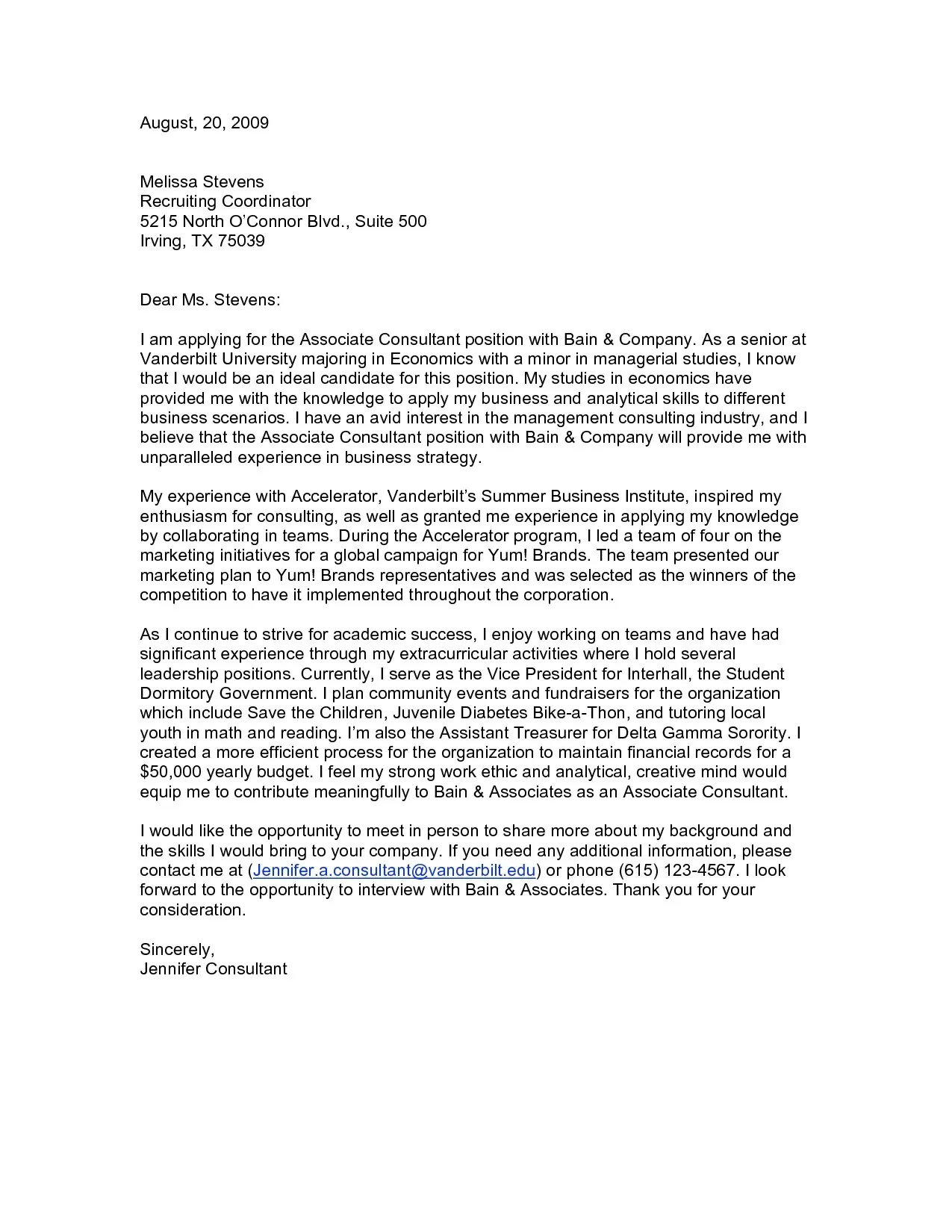
A strong consulting cover letter should include several key elements. Start with a compelling opening that grabs the reader’s attention and clearly states the role you’re applying for. Follow with a brief overview of your relevant experience and skills, highlighting achievements that align with the job requirements. Demonstrate your understanding of the company and the role, showing that you’ve done your research and understand their business. Provide specific examples of your skills in action, quantifying your accomplishments whenever possible. Illustrate how your skills and experience align with the company’s needs and how you can contribute to their success. End with a strong closing, restating your interest and expressing your enthusiasm for the opportunity. Include a call to action, such as expressing your desire for an interview. Include your contact information, making it easy for the hiring manager to reach you. Make sure these key elements are all present in your cover letter.
Writing a Strong Opening
The opening of your cover letter is crucial for grabbing the reader’s attention. Begin by clearly stating the specific role you are applying for and how you learned about the opportunity. If you were referred by someone at the company, mention their name. Express your enthusiasm for the position and the firm. Show that you understand the company’s mission and values. Avoid generic greetings like “To Whom It May Concern.” Instead, address the hiring manager by name whenever possible. Immediately highlight your most relevant skills or experiences, demonstrating that you are a strong candidate for the role. A strong opening sets the tone for the rest of your cover letter and encourages the reader to continue reading. Make it personal, and let your enthusiasm shine through. Consider starting with a strong statement or a brief anecdote that highlights your relevant experience and showcases your passion for consulting. Your opening should be concise and to the point. It should be focused on making a great first impression.
Presenting Your Value Proposition
Consulting firms hire consultants to solve their clients’ problems and drive positive outcomes. Your cover letter should articulate your value proposition: what you bring to the firm and the benefits you can provide. Focus on how your skills and experience align with the firm’s needs and how you can contribute to their success. Clearly define your unique value proposition, highlighting the specific skills, knowledge, and experience that differentiate you from other candidates. Provide specific examples of how you have delivered results in the past. Explain how you have solved complex problems, improved efficiency, or driven revenue growth. Demonstrate your understanding of the firm’s clients and the challenges they face. This shows that you are not just a candidate but a problem-solver who can contribute immediately. Emphasize the benefits of hiring you, and show how you can help the firm achieve its goals. When you present your value proposition, you want to make sure you stand out.
Quantifying Your Accomplishments

Quantifying your accomplishments is an essential strategy to demonstrate your impact and value. Instead of vaguely stating your achievements, use numbers and metrics to illustrate the results. For example, instead of saying “Improved project efficiency,” specify “Improved project efficiency by 15%, resulting in a savings of $100,000.” Whenever possible, include specific numbers, percentages, and dollar amounts to show the tangible impact of your work. Provide context for your achievements, explaining the situation, the actions you took, and the results you achieved (the STAR method). Use data and metrics to support your claims and provide concrete evidence of your success. Highlighting your accomplishments with concrete numbers provides credibility. Quantifying your achievements shows potential employers what you are capable of and helps them imagine you in a new role. Quantifying your accomplishments will make your cover letter stand out from the rest.
Addressing Potential Weaknesses
It can be beneficial to address potential weaknesses or gaps in your experience proactively in your cover letter. If there are any aspects of your background that might raise concerns, acknowledge them briefly and explain them. Frame any weaknesses in a positive light. For example, if you have a gap in your employment history, explain the reason and highlight what you did during that time, such as taking courses or volunteering. Show how you overcame a challenge or learned from a mistake. Turn a perceived weakness into a strength. Provide context and explanations to give your potential employer a clear understanding of your situation. The key is to be honest, transparent, and focus on what you have learned. By addressing weaknesses head-on, you demonstrate self-awareness and a willingness to learn and grow. It is also important to emphasize your strengths and transferable skills.
Writing a Powerful Closing
The closing of your cover letter is your final opportunity to make a lasting impression. Restate your interest in the position and the firm and express your enthusiasm for the opportunity. Reiterate your value proposition, highlighting the key skills and experiences you can bring to the role. Make sure that your closing is concise and memorable, encouraging the hiring manager to take action. Include a clear call to action, such as requesting an interview and expressing your availability. Thank the reader for their time and consideration. Provide your contact information, making it easy for them to reach you. Your closing should be enthusiastic and confident. By writing a strong closing, you ensure that the hiring manager remembers you. A powerful closing can significantly increase your chances of getting an interview and ultimately landing the job. Remember that you want to leave a lasting impression.
Proofreading and Editing Your Cover Letter

Proofreading and editing your cover letter is essential for ensuring it is free of errors and presents you professionally. Carefully check for any typos, grammatical errors, and formatting inconsistencies. Read your cover letter aloud to catch any awkward phrasing or sentences that don’t flow smoothly. Ask a friend, family member, or career advisor to review your cover letter for feedback and suggestions. They may find errors that you have missed. Proofread multiple times, checking for different types of errors each time. First, check for spelling errors, then for grammar and punctuation, and finally for formatting and style. Be diligent, and ensure that your cover letter is perfect. A well-proofread cover letter shows that you are detail-oriented and care about presenting yourself professionally. Proofreading and editing helps you avoid making silly mistakes that may cause your cover letter to be removed from consideration.
Common Mistakes to Avoid
When crafting a consulting cover letter, several common mistakes can undermine your application. Avoid generic cover letters that are not tailored to the specific role or firm. Do not repeat your resume verbatim. Instead, provide context and expand on your achievements. Do not use jargon or overly complex language. Write in a clear, concise, and professional tone. Avoid typos, grammatical errors, and formatting inconsistencies. Make sure your letter is easy to read. Do not be negative or complain about past employers or situations. Be positive and focus on your skills and accomplishments. Avoid being overly aggressive or boastful. Demonstrate confidence without being arrogant. Avoid exceeding one page in length. Keep your cover letter concise and to the point. By avoiding these mistakes, you can greatly improve the effectiveness of your cover letter and increase your chances of success.
Reviewing Cover Letter Examples
Reviewing cover letter examples can provide valuable insights and guidance. Search online for sample cover letters from successful consultants. Analyze the structure, language, and tone of each example. Pay attention to how the authors highlight their skills and experience. Look for examples tailored to specific consulting roles or firms. Use the examples as a template, but do not copy them directly. Customize the content to fit your own background and the specific job requirements. Pay attention to the formatting and structure of the examples. Consider how you can adapt the examples to best represent your skills and experience. Review a variety of examples to get a sense of what works and what doesn’t. Learning from these examples will help you craft a compelling cover letter that stands out from the competition.
Analyzing Successful Cover Letters
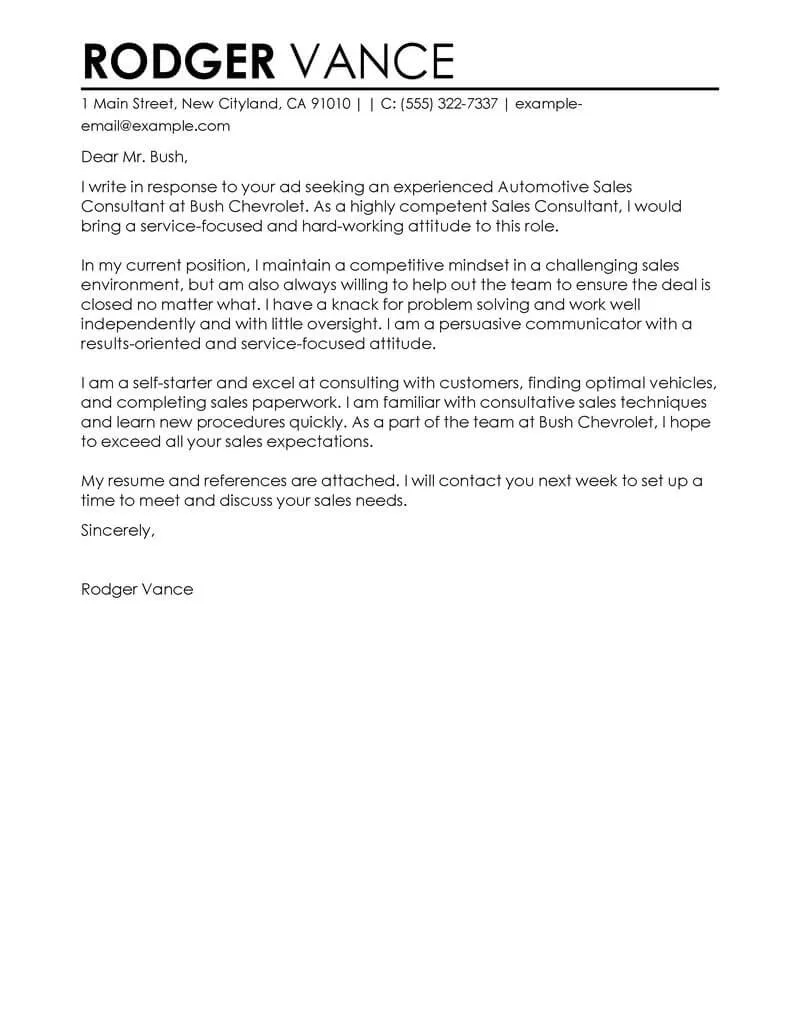
Analyzing successful cover letters can provide invaluable lessons. Identify the key elements that make the letters effective. Analyze the language and tone used to communicate the candidate’s skills, experience, and enthusiasm. Pay attention to how the candidates address the hiring manager. Note how they highlight their accomplishments and quantify their results. Identify how the successful candidates demonstrate their understanding of the company and the role. Recognize how the candidates address potential weaknesses. Look for examples of a strong opening and a powerful closing. Deconstruct the structure and flow of the letters to understand how they are organized. Learn from the best by studying successful cover letters. The more examples you read, the better you will understand the components of a great cover letter.
Seeking Feedback on Your Cover Letter
Seeking feedback on your cover letter is an essential step in the process. Ask trusted friends, family members, or career advisors to review your cover letter and provide constructive criticism. Seek feedback from someone with experience in the consulting industry. Share your cover letter with a mentor or a former colleague for their advice. Be open to suggestions and willing to make revisions based on the feedback you receive. Ask specific questions. Are the language and tone appropriate? Is the content clear and concise? Does the letter effectively highlight your skills and experience? Make sure you are open to constructive criticism, and use the feedback to refine your cover letter. Receiving feedback from different perspectives can help you identify areas for improvement and ensure your cover letter is as effective as possible. This will help you prepare a more polished and effective cover letter.
Refining Your Cover Letter for Success
Refining your cover letter is an ongoing process. Incorporate the feedback you receive and make necessary revisions. Ensure that your cover letter aligns with the specific requirements of the role and the consulting firm. Tailor your letter to match the company culture and values. Proofread the final version carefully to catch any remaining errors. Check to make sure your formatting is consistent and professional. By taking the time to refine your cover letter, you increase your chances of standing out from the competition and landing your dream consulting job. Remember that a well-crafted cover letter can make all the difference. Ensure your cover letter reflects your best qualities and demonstrates your passion for the opportunity. When you take the time to refine your cover letter, you show that you care, and this will pay off.
